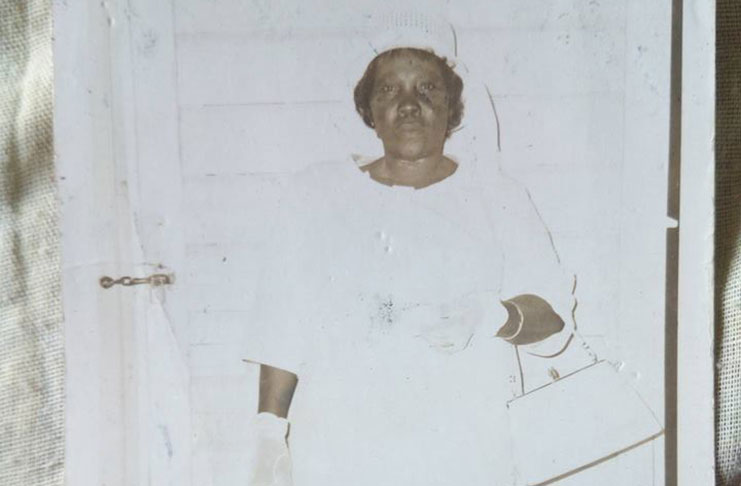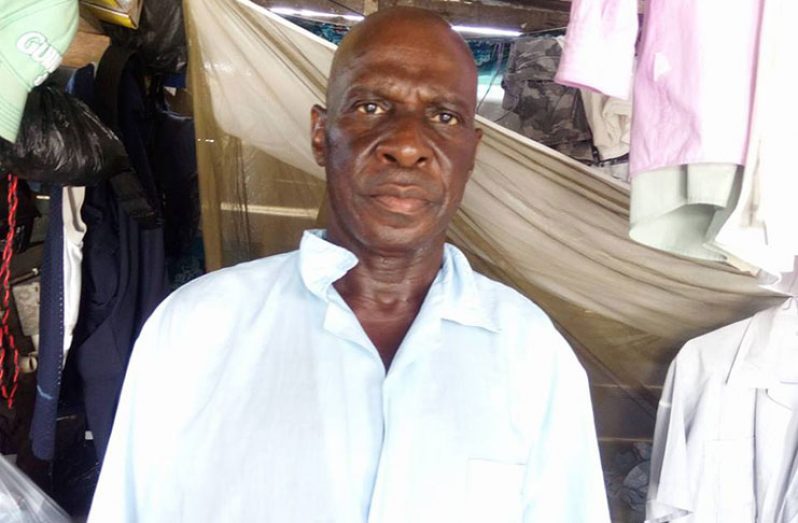“ I use to be ashamed of my mother to be honest, God forgive me for this.” These are the words of a remorseful Randolph Braithwaite, a now 64-year-old man, who was brave enough to tell the horrid tales of growing up with a mother and a grandmother who had both contracted the mosquito-borne disease, lymphatic filariasis, commonly known as ‘big foot’. Randolph grew up in a small village located on the West Bank of Demerara called Bagotville and while poverty and other social issues engulfed his childhood, what drove the nail to the hammer of sorrow, was seeing both his mother and grandmother suffer from filariasis, and thinking that he too may get it one day, after concluding that it must be hereditary.
The entire village, he said, looked down on the sickness as a family curse and it was not too long ago that Braithwaite learned that it was actually a medical condition caused by a mosquito bite.
He was the last of 10 children and his mother Janet Allen, he recalled, had no knowledge back then of what the disease was, and likened it to a cold in the feet. She also suffered regularly from a very hot fever which they all thought was correlated with her swollen feet.
LACK OF SENSITISATION
Back then, Randolph said that there were hardly any medication available or sensitisation of the disease and if steps were taken to educate the populace on how to prevent contraction, his mother, he said, would not have had to suffer the same fate as her mother did, and he would not have had to live his life thinking that he too would get it once he turned an adult. But most importantly, he wishes that he knew better so that he would not have had to live with the guilt of knowing that he shunned his mother for a condition, she had no control over. “Only recently I knew that it was due to a mosquito bite, even the term ‘Goadie’ which is the same disease that affects men in their genitals- only recently I knew it is the same filaria. In our time, I don’t think people were sensitised that it came from a mosquito bite,” Braithwaite said.
Speaking more on the lack of sensitisation back then, he said that steps would have been taken to be more careful and hygienic, especially as it relates to water storage. “Long time, people use to keep a lot of drums because the water system was poor, and that is where the mosquito use to breed because it was stagnant… you didn’t had these health centres and campaigns and so forth,” he said.
A DREADFUL DISEASE
Lymphatic Filariasis also known as elephantiasis is called “Big Foot” or “Goadie” in our society and is said to be one of the leading causes of long-term disability worldwide. According to the World Health Organization (WHO), it is caused by three species of thread-like nematode worms, known as filariae – Wuchereria Bancrofti, Brugia Malayi and Brugia Timori.
Read More: http://www.who.int/mediacentre/factsheets/fs102/en/
DISCRIMINATION
Like leprosy, Filariasis can be considered a neglected disease, since persons showing signs of the infection are neglected and most likely treated with scorn. There is no cure for the disease, but treatment and ‘preventables’ are put in place by health agencies worldwide.
As related by Randolph, during the late 70s and 80s when the disease became prevalent, persons were unaware of what it was, as a result of a lax in the medical system. In fact, it was only in 1997 that the WHO classified the disease as eradicable or potentially eradicable.

According to the Coordinator of the Neglected Infectious Disease Programme and the National Coordinator for the Elimination of Lymphatic Filariasis Campaign, Dr. Fabu Moses, in 1997, the World Health Assembly http://www.who.int/mediacentre/events/governance/wha/en/ adopted Resolution WHA 50.29, which called on member states to initiate steps to eliminate Lymphatic Filariasis as a public health problem. In response, WHO launched the Global Programme to Eliminate Lymphatic Filariasis (GPELF) http://www.who.int/lymphatic_filariasis/elimination-programme/en/) in 2000. Guyana, he said, signed onto the resolution that same year and what would have been the grand ‘DEC SALT’ campaign commenced.
“By 2001, we had mapped the entire country, and this is how we know that more than 90 percent of the Guyanese population is at risk of developing Lymphatic Filariasis because of the mapping that we did,” Moses had told the Pepperpot Magazine. It was further explained that following that mapping exercise, the country initiated the diethylcarbamazine (DEC) salt campaign through Mass Drug Administration (MDA) in keeping with GPELF.
A catchy jingle was used to capture the attention of Guyanese and many persons gravitated toward the use of DEC salt since many now became cognisant that filariasis is now a medical sickness, rather than a family curse or caused by the common cold in the feet.
Randolph did not hesitate to use DEC SALT. In fact, he too went on a massive campaign, advocating for its use, especially in his immediate and extended family circle. “I started using the DEC salt to avoid at least getting ‘goadie’, because knowing that your family had it, your grandmother, then it pass on to the other generation, you know I felt relieved, that they came up with a solution to the issue and I started pursuing all avenues to get this DEC salt, because who want to get a big goadie or a big foot?” Randolph asked.
Dr. Moses, however, mentioned that the DEC Salt Campaign had proven to be a difficult one since the Public Health Ministry was unable to determine the number of persons using it as against the regular salt.
A BETTER PLAN
The Ministry of Public Health in an effort to fully eradicate the disease, collaborated with the WHO and Centre for Disease Control (CDC) to launch a Lymphatic Filariasis Mass Drug Administration (MDA) campaign in 2003. The MDA aims to treat an entire population within a country through administering a curative dose of medication to vulnerable citizens without first testing for infection since the aim is to prevent, noting that there is no cure. In 2009, it was rolled out in Regions Two, Six and Five and has been an annual exercise. Not only is distribution the key, but public health agents have the mandate of sensitising the public of the importance of taking the pills and to encourage them to practice other forms of preventative measures. These include practicing clean water storage when it is necessary, getting rid of all stagnant water, wearing long clothing at nights and sleeping under treated bed nets.

The 2017 campaign was launched some weeks ago under the theme, “Let’s Prevent Filaria” and emphasises that chronic manifestations cannot be reversed, and as such, prevention is the best cure. This year, Regions Three, Four, Five and 10 are targeted for the MDA, since these regions have been identified with the most filariasis cases. Deworming treatment will also be distributed to children and adults and the campaign targets homes, schools, clinics, and places of employment, among others. The pills must be taken every year, for at least five years to be effective.
Read More: http://guyanachronicle.com/2017/10/01/govt-steps-fight-filaria
According to Pan American Health Organisation and World Health Organisation (PAHO/WHO) Representative to Guyana, Dr. William Adu-Krow, the pills cost about US $1 million. Public Health officials revealed that actual campaign costs an additional US$250,000 to US$400,000.
CONTINUE THE FIGHT
Despite being among four countries in the Americas that are yet to eliminate Filariasis, the PAHO/WHO, as well as, the MoPH and other partnering organisations have pledged to continue to fight against lymphatic filariasis. Every man, woman and child are being urged to drink the pill. The public health agents are clad in purple jerseys as a colour of hope.
Despite not being a first-hand victim, Randolph Braithwaite has applauded the PAHO/WHO and well as the MoPH for taking the initiative in rolling out such a campaign. He described it as ‘freedom from fear” and said that what is more heart-warming is to note that everyone in society despite your economic or social status, can benefit from that freedom and prevent themselves from falling victim to filariasis.




.png)









